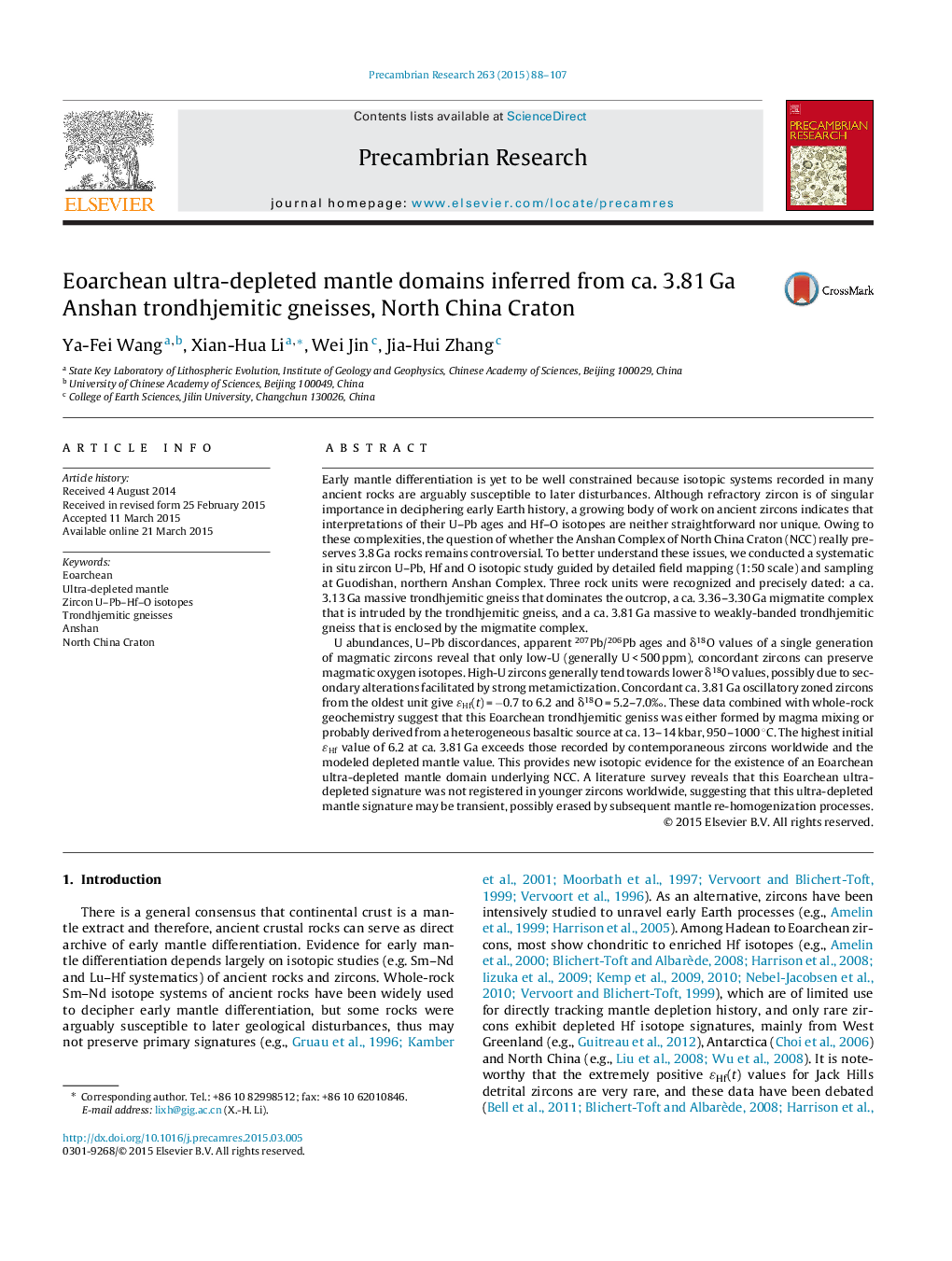| Article ID | Journal | Published Year | Pages | File Type |
|---|---|---|---|---|
| 4722696 | Precambrian Research | 2015 | 20 Pages |
•Field mapping and in situ zircon study identify a new 3.81 Ga trondhjemitic gneiss.•Only low-U, concordant zircons best preserve their primary O-isotope signatures.•Highly depleted reliable ɛHf(t) value of 6.2 for 3.81 Ga zircons are reported.•Existence of Eoarchean ultra-depleted mantle and early mantle differentiation.
Early mantle differentiation is yet to be well constrained because isotopic systems recorded in many ancient rocks are arguably susceptible to later disturbances. Although refractory zircon is of singular importance in deciphering early Earth history, a growing body of work on ancient zircons indicates that interpretations of their U–Pb ages and Hf–O isotopes are neither straightforward nor unique. Owing to these complexities, the question of whether the Anshan Complex of North China Craton (NCC) really preserves 3.8 Ga rocks remains controversial. To better understand these issues, we conducted a systematic in situ zircon U–Pb, Hf and O isotopic study guided by detailed field mapping (1:50 scale) and sampling at Guodishan, northern Anshan Complex. Three rock units were recognized and precisely dated: a ca. 3.13 Ga massive trondhjemitic gneiss that dominates the outcrop, a ca. 3.36–3.30 Ga migmatite complex that is intruded by the trondhjemitic gneiss, and a ca. 3.81 Ga massive to weakly-banded trondhjemitic gneiss that is enclosed by the migmatite complex.U abundances, U–Pb discordances, apparent 207Pb/206Pb ages and δ18O values of a single generation of magmatic zircons reveal that only low-U (generally U < 500 ppm), concordant zircons can preserve magmatic oxygen isotopes. High-U zircons generally tend towards lower δ18O values, possibly due to secondary alterations facilitated by strong metamictization. Concordant ca. 3.81 Ga oscillatory zoned zircons from the oldest unit give ɛHf(t) = −0.7 to 6.2 and δ18O = 5.2–7.0‰. These data combined with whole-rock geochemistry suggest that this Eoarchean trondhjemitic geniss was either formed by magma mixing or probably derived from a heterogeneous basaltic source at ca. 13–14 kbar, 950–1000 °C. The highest initial ɛHf value of 6.2 at ca. 3.81 Ga exceeds those recorded by contemporaneous zircons worldwide and the modeled depleted mantle value. This provides new isotopic evidence for the existence of an Eoarchean ultra-depleted mantle domain underlying NCC. A literature survey reveals that this Eoarchean ultra-depleted signature was not registered in younger zircons worldwide, suggesting that this ultra-depleted mantle signature may be transient, possibly erased by subsequent mantle re-homogenization processes.
